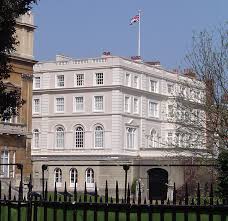The Significance of Clarence House in Royal History

Introduction to Clarence House
Clarence House, situated in the heart of London, has been an emblem of British royal heritage for generations. As the official residence of King Charles III prior to his accession to the throne, it holds deep historical significance and is a symbol of royal tradition and identity. This iconic building not only serves as a home but also as a venue for numerous public and private engagements, reflecting the continuous relationship between the monarchy and the public.
Historical Background
The construction of Clarence House began in 1825, commissioned by King William IV as a private residence. Its neoclassical architecture and elegant interiors make it a notable addition to London’s royal properties. Throughout its history, the house has hosted various royal dignitaries and has been the backdrop for significant national events.
Notably, Queen Elizabeth, The Queen Mother inhabited the residence from 1953 until her death in 2002, which further entrenched its importance in the narrative of the British royal family.
Clarence House Today
Today, Clarence House serves as the residence of King Charles III and Camilla, Queen Consort. Although the King has taken on the mantle of the monarchy, Clarence House remains a base for charitable work and official meetings. The royal couple are known for their advocacy on issues such as environmental conservation and heritage protection, using the residence as a platform to promote these important causes.
The house itself is also thrust into the limelight during state functions, private receptions, and official visits. The gardens of Clarence House are particularly notable, as they provide a serene environment that contrasts with the bustling nature of London. The gardens are often open to the public during specific times of the year, allowing visitors to experience the royal horticultural beauty.
Conclusion
Clarence House remains a significant part of the Royal Family’s narrative, functioning not only as a residence but also as a mark of continuity and evolution within the monarchy. As King Charles III continues to embrace his role as the sovereign, Clarence House stands as a testament to his personal history and the British royal legacy. For royal watchers and the public alike, Clarence House embodies the ongoing story of a monarchy that is both historical and contemporary, continually adapting to the present while honouring the past.







